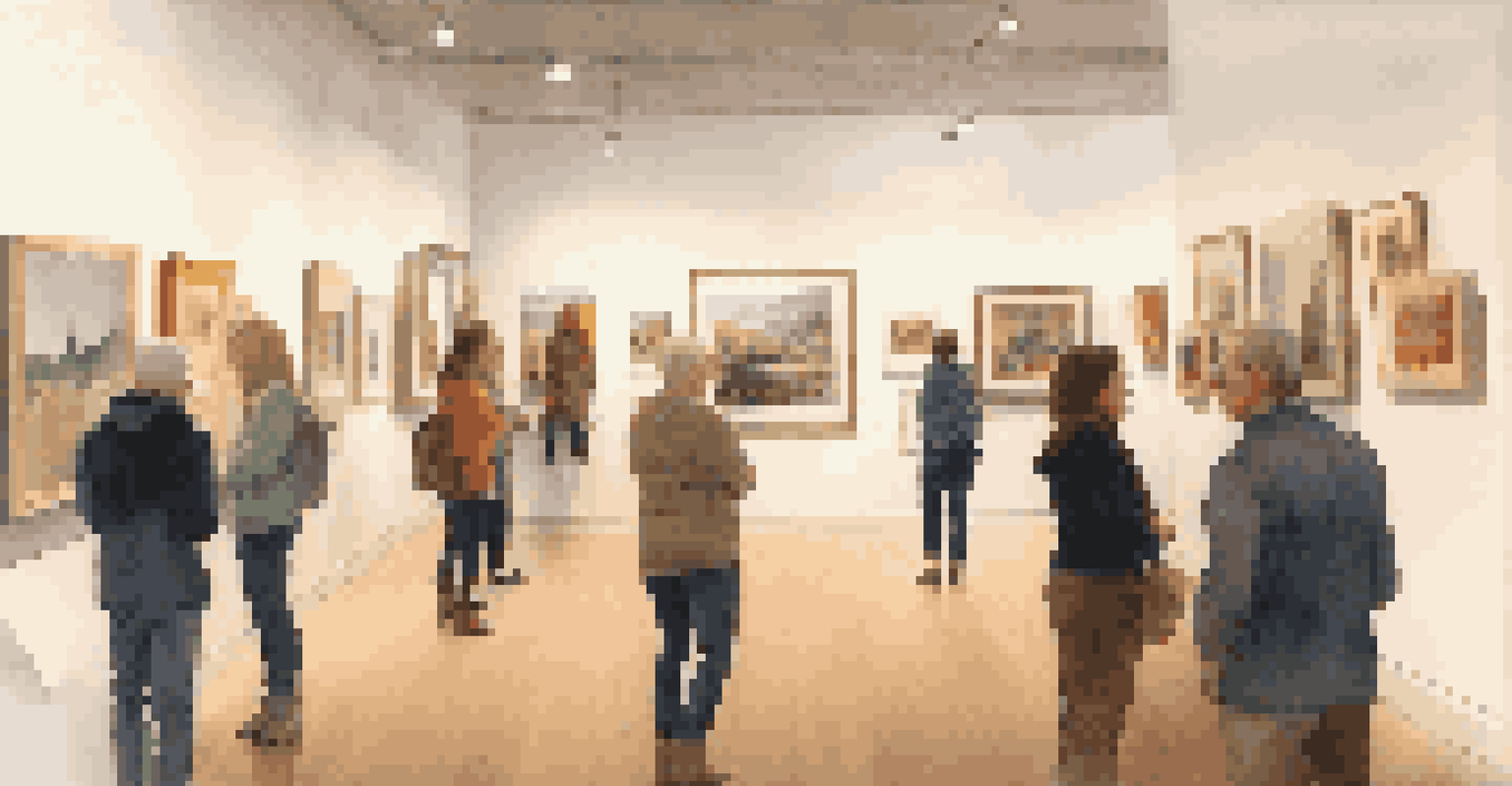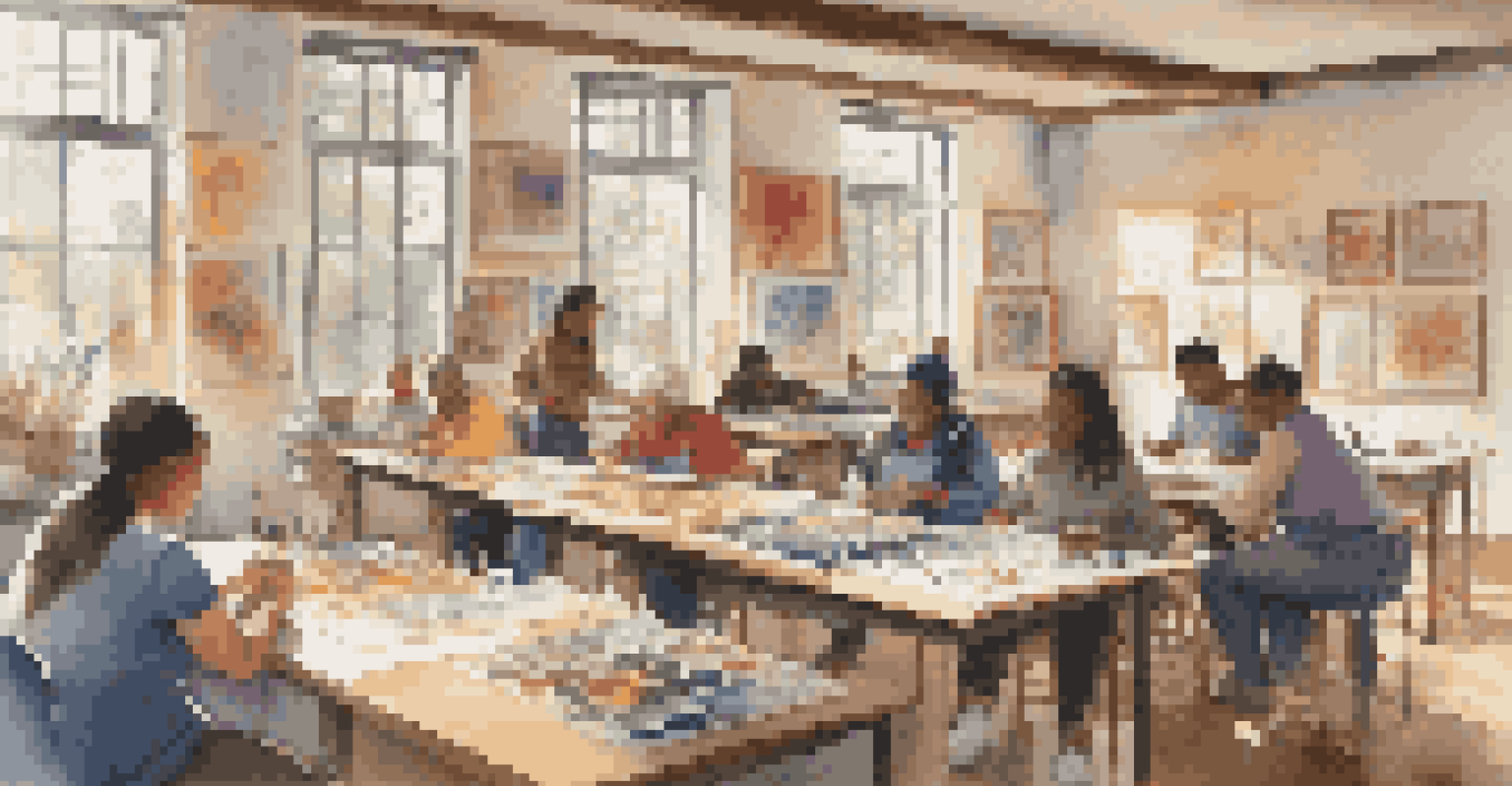The Role of Cultural Institutions in Community Engagement

Understanding Cultural Institutions and Their Impact
Cultural institutions, such as museums, art galleries, and theaters, play a vital role in shaping community identity. They serve as hubs where people can gather, share experiences, and celebrate their heritage. By providing a space for cultural expression, these institutions help foster a sense of belonging and pride within the community.
Cultural institutions are the heart of a community, bringing people together and fostering connections that transcend differences.
Moreover, cultural institutions often reflect the diversity of the communities they serve. This inclusivity allows for a richer dialogue about different cultures, traditions, and perspectives. When people engage with these institutions, they gain a deeper understanding of not only their own culture but also the cultures of their neighbors, promoting harmony and respect.
Ultimately, the impact of cultural institutions extends beyond their walls; they contribute significantly to the social fabric of the community. By encouraging participation and collaboration, they create opportunities for individuals to connect, learn, and grow together.
Facilitating Access to Arts and Education
One of the primary roles of cultural institutions is to provide access to arts and education for all community members. Many institutions offer programs that cater to various age groups and skill levels, making art and learning more accessible than ever. This democratization of culture allows individuals who may not have had the opportunity to engage with the arts to do so.

For example, many museums host free workshops and exhibitions that encourage hands-on participation. These initiatives not only make art more approachable but also allow participants to explore their creativity in a supportive environment. When people feel empowered to express themselves, it can lead to personal growth and community enrichment.
Cultural Institutions Foster Identity
Cultural institutions serve as essential hubs for community gathering, expression, and pride.
In addition, the educational programs offered by cultural institutions often align with local school curricula, providing students with valuable resources to enhance their learning. This connection between cultural institutions and education fosters a love for learning and encourages students to think critically about the world around them.
Building Community Through Collaborative Events
Cultural institutions often serve as facilitators for community-building events that bring people together. From festivals to art fairs, these events create opportunities for individuals to socialize, share experiences, and celebrate their collective identity. Such gatherings help to create a sense of unity and shared purpose among community members.
Art is not a luxury; it is a necessity for a vibrant community and a catalyst for change.
By collaborating with local artists, organizations, and businesses, cultural institutions can curate events that reflect the unique character of their communities. This not only supports local talent but also instills a sense of pride in the community’s artistic achievements. When people see their culture represented and celebrated, it strengthens their connection to one another.
Moreover, these events can stimulate local economies by attracting visitors and encouraging spending in the area. The ripple effect of community engagement through cultural institutions can lead to lasting positive changes, enhancing both social cohesion and economic vitality.
Promoting Diversity and Inclusion in the Arts
Cultural institutions have a responsibility to promote diversity and inclusion within their programming. By showcasing a wide range of voices and perspectives, they can challenge stereotypes and broaden the understanding of different cultures. This commitment to inclusivity not only enriches the community but also fosters an environment where everyone feels valued and represented.
For instance, many institutions actively seek out partnerships with underrepresented artists and communities. By providing platforms for these voices, they not only highlight diverse narratives but also inspire future generations to share their stories. This emphasis on diversity can lead to innovative collaborations and fresh perspectives in the arts.
Access to Arts Enhances Community
By providing educational programs and workshops, cultural institutions make art accessible to all, fostering personal and community growth.
In addition, cultural institutions often provide training and resources to help marginalized groups gain access to the arts. By breaking down barriers and creating pathways for participation, they empower individuals to engage with culture in meaningful ways, ultimately strengthening community ties.
Encouraging Volunteerism and Community Involvement
Cultural institutions often rely on the dedication of volunteers to help them achieve their mission. By encouraging community members to get involved, these institutions foster a spirit of collaboration and shared responsibility. Volunteers not only contribute their time and skills but also develop a deeper connection to the cultural fabric of their community.
For many individuals, volunteering at cultural institutions can be a transformative experience. It allows them to learn new skills, meet like-minded people, and gain insights into the workings of the arts and culture sector. This personal growth often translates into a greater commitment to community engagement beyond their volunteer work.
Additionally, cultural institutions that prioritize volunteerism create a sense of ownership among community members. When individuals feel like they are part of something larger than themselves, they are more likely to advocate for and support the institution. This symbiotic relationship between cultural institutions and the community enhances the overall impact of their programs.
Utilizing Technology for Greater Engagement
In recent years, many cultural institutions have embraced technology to enhance community engagement. Digital platforms allow institutions to reach wider audiences and offer innovative ways for people to interact with art and culture. From virtual exhibitions to interactive online workshops, technology has transformed how we experience and connect with the arts.
For example, during the pandemic, many institutions pivoted to online programming, allowing individuals to engage with cultural content from the comfort of their homes. This shift not only kept the community connected during challenging times but also opened up new opportunities for participation from those who may not have been able to attend in-person events.
Diversity Strengthens Community Ties
Promoting diversity and inclusion in programming enriches communities by highlighting various voices and perspectives.
Going forward, cultural institutions can continue to leverage technology to create hybrid experiences that combine in-person and virtual engagement. By doing so, they can cater to diverse preferences and accessibility needs, ensuring that everyone has the chance to engage with the rich cultural offerings of their community.
The Future of Community Engagement Through Culture
As we look to the future, the role of cultural institutions in community engagement is more important than ever. They are uniquely positioned to act as catalysts for social change, fostering connections and understanding among diverse populations. By continuing to prioritize inclusivity, accessibility, and collaboration, these institutions can strengthen their impact on the communities they serve.
Moreover, cultural institutions must remain adaptable and responsive to the evolving needs of their communities. This means actively seeking feedback and involving community members in decision-making processes. When people feel heard and valued, they are more likely to engage with and support cultural initiatives.

Ultimately, the future of community engagement through cultural institutions will rely on their ability to innovate and connect with individuals on a personal level. By embracing new ideas and technologies, they can ensure that the arts remain a vital part of community life, enriching the lives of all who participate.